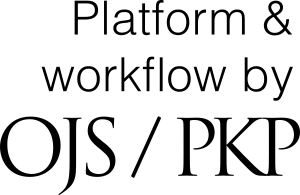Environmental exposure to metal(loid)s: an emerging risk factor for osteoporosis in postmenopausal women?
DOI:
https://doi.org/10.48797/sl.2025.364Keywords:
PosterAbstract
Background: Osteoporosis is a major public health concern, particularly in the aging population, due to its association with increased fracture risk and reduced quality of life [1]. Although well-established risk factors contribute to bone mineral density (BMD) loss [2], environmental exposure to metals and metalloids is an emerging but underexplored determinant. Objective: To evaluate the association between exposure to metals and metalloids and osteoporosis in postmenopausal women aged 50 and older. Methods: This cross-sectional study included 380 postmenopausal women, aged 50–70 years, residing in Cascavel, Paraná, Brazil. BMD was measured using dual-energy X-ray absorptiometry. Urinary concentrations of 20 metals and metalloids ─ aluminium (Al), barium (Ba), cadmium (Cd), cobalt (Co), cesium (Cs), copper (Cu), mercury (Hg), lithium (Li), manganese (Mn), molybdenum (Mo), nickel (Ni), lead (Pb), rubidium (Rb), antimony (Sb), selenium (Se), tin (Sn), strontium (Sr), thallium (Tl), uranium (U), and zinc (Zn) ─ were quantified using inductively coupled plasma mass spectrometry, and corrected for creatinine levels. Univariate and multiple regression analyses were used to investigate the association between metal(loid) exposure and BMD or osteoporosis risk. Results: A total of 73 women (19%) were diagnosed with osteoporosis. Univariate analysis revealed that urinary levels of Cd, Mn, Pb, Sb, Sn, and Zn were significantly increased in the osteoporosis group after adjustment for confounders (p < 0.05). Additionally, significant negative correlations were found between BMD and urinary levels of Al, Cd, Hg, Mn, Sb, and U after adjustment for confounders (p < 0.05). Higher urinary levels of Cd (OR = 1.495, 95% CI: 1.048; 2.131, p = 0.026), Mn (OR = 1.014, 95% CI: 1.001; 1.028, p = 0.040), Pb (OR = 1.016, 95% CI: 1.000; 1.033, p = 0.048) and Sb (OR = 2.059, 95% CI: 1.073; 3.950, p = 0.030) were independently and significantly associated with increased odds of osteoporosis. Conclusions: Our findings highlight a significant and clinically relevant association between environmental exposure to Cd or Sb and an increased risk of osteoporosis in postmenopausal women. Further longitudinal studies are essential to better understand the long-term effects of metal(loid) exposure on bone health, which could guide the development of targeted prevention strategies for osteoporosis.References
1. Shen Y. et al. The Global Burden of Osteoporosis, Low Bone Mass, and Its Related Fracture in 204 Countries and Territories, 1990-2019. Front Endocrinol 2022, 13, 882241, doi: 10.3389/fendo.2022.882241.
2. Porter J.L., Varacallo M.A. Osteoporosis. In: StatPearls Publishing 2025. https://www.ncbi.nlm.nih.gov/books/NBK441901/
Downloads
Published
How to Cite
Issue
Section
License
Copyright (c) 2025 Carlos Kunioka, Vanessa Souza, Bruno Rocha, Fernando Júnior, Luís Belo, Maria Manso, Márcia Carvalho

This work is licensed under a Creative Commons Attribution 4.0 International License.
In Scientific Letters, articles are published under a CC-BY license (Creative Commons Attribution 4.0 International License), the most open license available. The users can share (copy and redistribute the material in any medium or format) and adapt (remix, transform, and build upon the material for any purpose, even commercially), as long as they give appropriate credit, provide a link to the license, and indicate if changes were made (read the full text of the license terms and conditions of use).
The author is the owner of the copyright.









